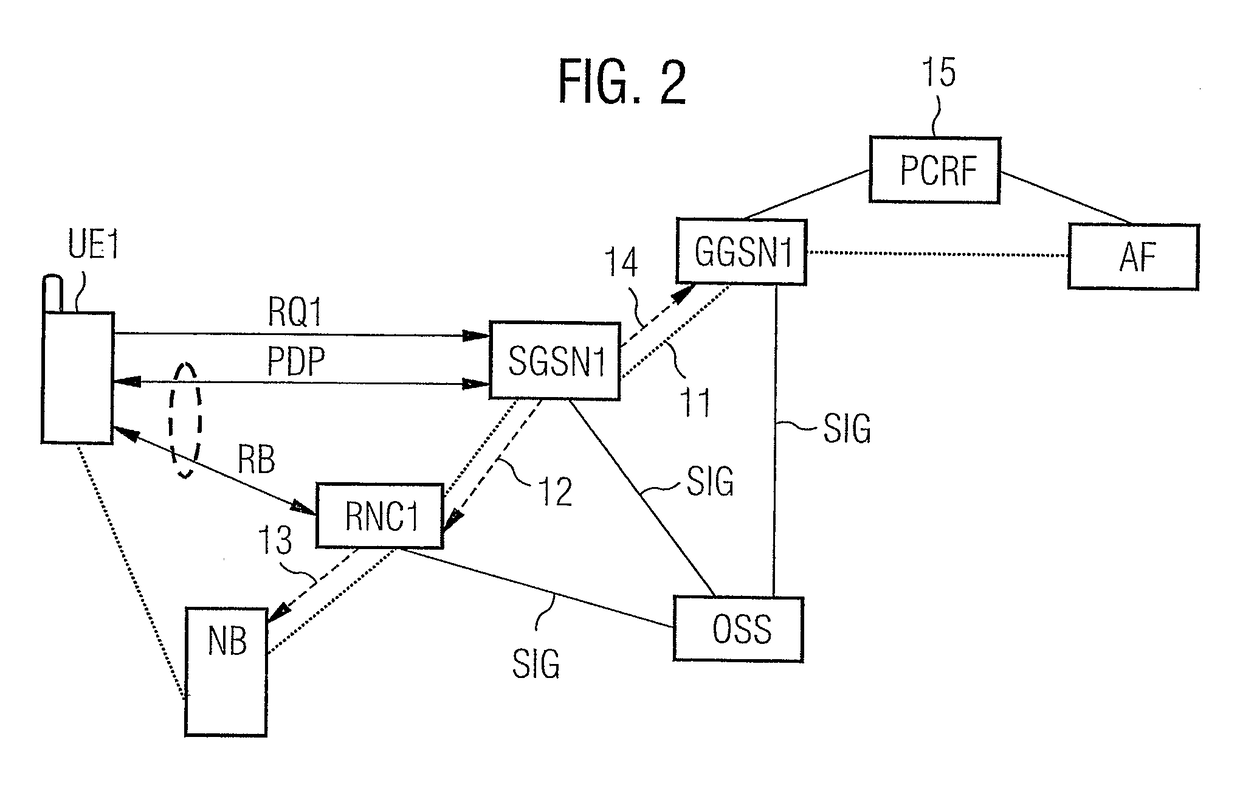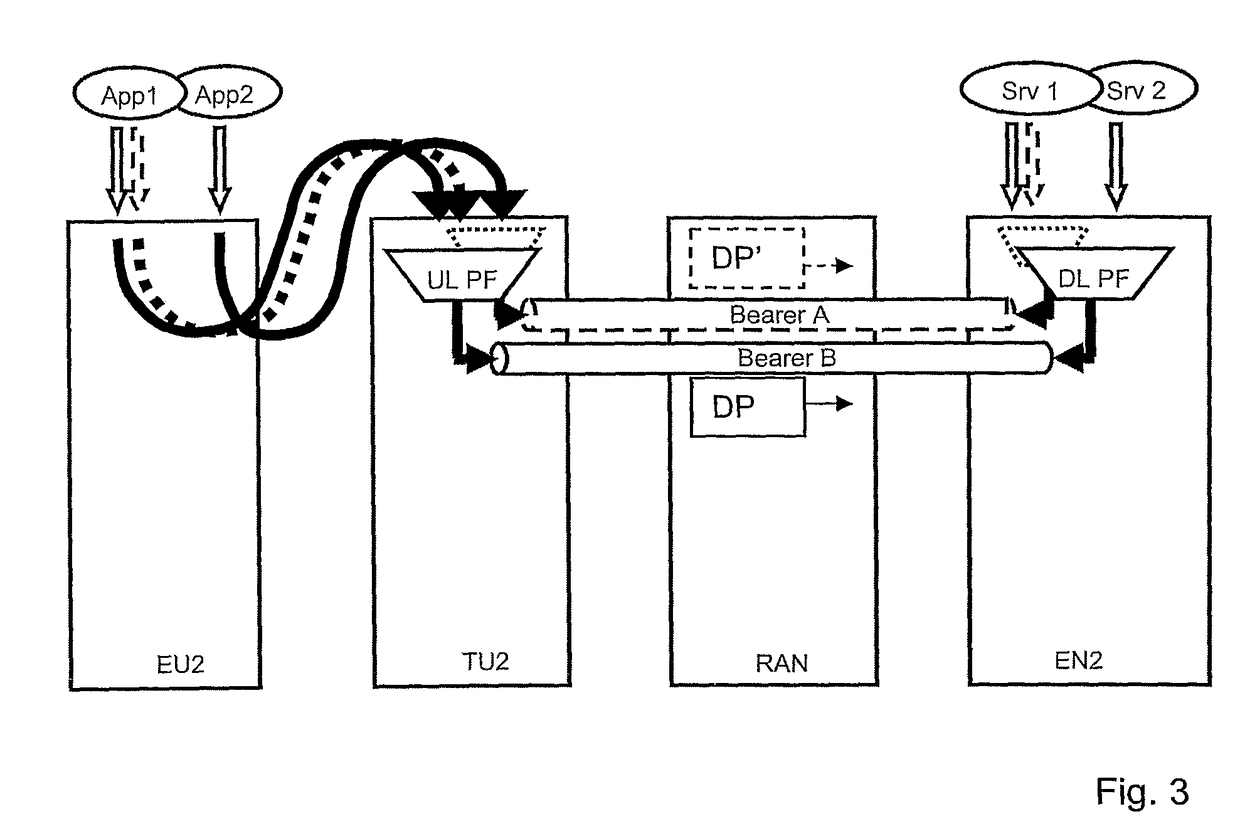Method and devices for installing packet filters in a data transmission
a packet filter and data transmission technology, applied in data switching networks, instruments, frequency-division multiplexes, etc., can solve the problems of inflexible existing methods for associating data packets with bearers, inability to dynamically change configuration, and not in the scope of current 3gpp standards. achieve the effect of simple and flexibl
- Summary
- Abstract
- Description
- Claims
- Application Information
AI Technical Summary
Benefits of technology
Problems solved by technology
Method used
Image
Examples
Embodiment Construction
FIG. 1 illustrates a quality of service concept in 3rd generation mobile systems as specified in technical specification 3GPP 23.107 V 6.3.0. of the 3rd Generation Partnership Project. Traffic comprising data packets is sent between a further entity (AF) and a user equipment comprising a terminal equipment (TE) and a mobile terminal (MT). The further entity (AF) may be a server which could be located in the operator's network or in an external network but it can be also another user equipment. The object of the concept is to provide a defined quality of service (QoS) on the application level using the bearer services of the underlying levels. Those bearer services are specified by contexts comprising attributes for defining the QoS of the respective bearer service. As the quality of the end-to-end service on the application layer depends on the specifications of the underlying levels, the contexts of the bearer services need to be specified with respect to the required end-to-end qu...
PUM
 Login to View More
Login to View More Abstract
Description
Claims
Application Information
 Login to View More
Login to View More - R&D
- Intellectual Property
- Life Sciences
- Materials
- Tech Scout
- Unparalleled Data Quality
- Higher Quality Content
- 60% Fewer Hallucinations
Browse by: Latest US Patents, China's latest patents, Technical Efficacy Thesaurus, Application Domain, Technology Topic, Popular Technical Reports.
© 2025 PatSnap. All rights reserved.Legal|Privacy policy|Modern Slavery Act Transparency Statement|Sitemap|About US| Contact US: help@patsnap.com



